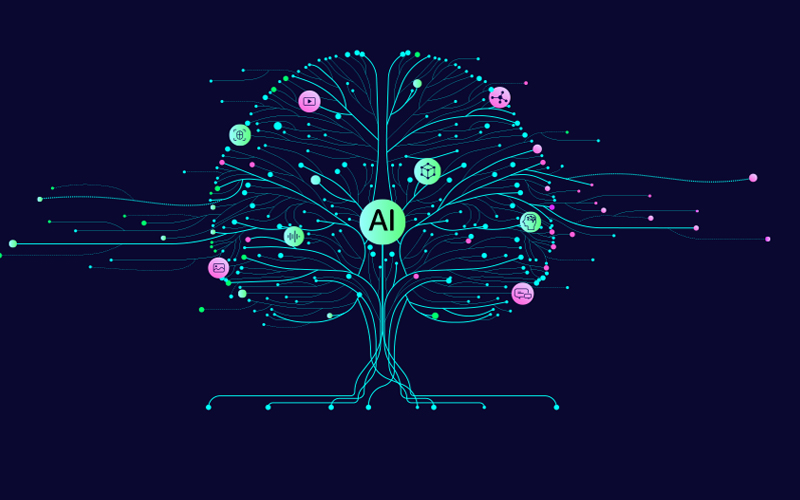The use of AI for business has opened a world of possibilities for various domains and sectors. However, the enigma of AI is far from being deciphered by an end user. It follows, then, that an end-user can only leverage AI in a limited and less-than-optimal fashion. The more AI comes within the reach of human intellect, the more malleable it becomes. From a business point of view, organisational accountability calls for AI outputs to be transparent for the benefit of different stakeholders and customers.
A series of industrial and academic efforts have thus led to explainable AI and interpretable AI. These efforts marked a departure of AI and machine learning from being black boxes to being transparent. With an elaborate map of an AI model’s operating procedure, we can expect more complex prompt engineering and a better use of the model.
AI interpretability
AI interpretability is the ability to understand how an AI model makes its decisions. It emphasises transparency by illuminating the internal mechanics of an AI model. This includes aspects such as how features are combined and weighted to produce specific predictions. An interpretable model ensures that its decision-making process can be readily comprehended by humans, making it a critical component of responsible AI.
While simpler models like decision trees and linear regressions are inherently interpretable due to their structures, more complex models — such as deep neural networks — require additional techniques to justify their intricate logic. These include methods like Local Interpretable Model-Agnostic Explanations (LIME) and Shapley Additive Explanations (SHAP), which help demystify black-box systems.
Interpretability plays a crucial role in debugging, detecting biases, and ensuring regulatory compliance. Interpretability builds trust by making AI outputs transparent and fair. By allowing developers and stakeholders to see how a model arrives at its conclusions, interpretability ai in fostering confidence, optimising performance, and ensuring ethical AI practices.
Essentially, interpretability is the foundation for understanding the “how” behind AI predictions and suggestions.
AI explainability
AI explainability is the ability to answer why an AI model made a specific decision or prediction. An explainable model translates complex processes into clear, human-friendly insights. Compared to interpretability, which delves into the inner workings of the model, explainability emphasises the output and its rationale.
Explainable AI (XAI) provides clarity for black-box models like deep neural networks. It is essential for fostering trust among users, meeting regulatory requirements, and ensuring ethical AI deployment in businesses. It also helps organisations mitigate risks by highlighting biases or errors in the decision-making process.
By making AI operations accessible to users, AI explainability ensures that these models are not just accurate but also accountable and trustworthy.
Steps to improve interpretability and explainability
Interpretability focuses on how it processes inputs to generate outputs — making it a consideration before the AI output is produced. On the other hand, explainability provides justifications for the AI model’s decisions — why it made a specific prediction — making it relevant after the AI output is generated. Together, they create a comprehensive framework for transparency in AI. Understanding the how before the output and the why post-hoc, lends AI to several use cases. Here’s how businesses could get the best out of these implementations.
- Visualisation techniques: Visualisation tools like heatmaps, Partial Dependence Plots (PDPs), and Individual Conditional Expectation (ICE) plots help stakeholders understand how specific features influence predictions. These techniques make complex models more transparent and accessible to both technical teams and end users.
- Intrinsic and post-hoc methods: Selecting inherently interpretable models, such as decision trees or linear regression, ensures intrinsic interpretability. For black-box models, apply post-hoc techniques like Local Interpretable Model-Agnostic Explanations (LIME) or Shapley Additive Explanations (SHAP) to provide insights into decision-making processes.
- Traceability: Implement traceability techniques like DeepLIFT, which tracks neuron activations in neural networks, to create a clear link between inputs and outputs. This approach enhances accountability and allows stakeholders to retrace the decision-making process.
- Simple decision rules: Breaking down complex models into simpler components or rules can improve interpretability. For instance, converting deep learning outputs into human-readable logic statements ensures clarity without compromising on effectiveness.
- Governance frameworks: Establish a governance structure to continuously monitor AI models for fairness, bias, and compliance. Regular evaluations ensure that interpretability and explainability are embedded in the AI lifecycle, addressing regulatory and ethical requirements.
How can Infosys BPM help leverage AI for business?
Using AI for business has the potential to accelerate value creation. Infosys provides an AI-first set of services, solutions, and platforms using generative AI technologies with Infosys Topaz. Built on the key tenet of ‘responsible by design’, the AI business operations platform continuously adapts to uphold standards.








